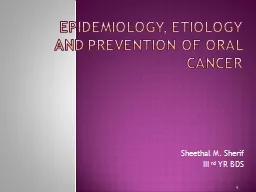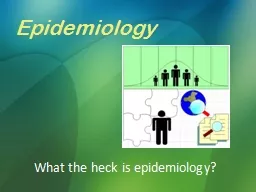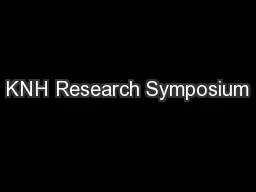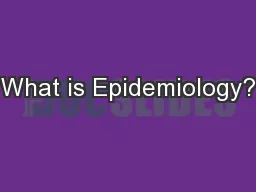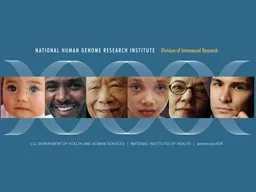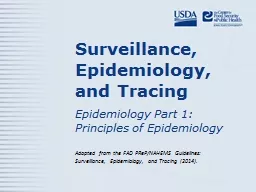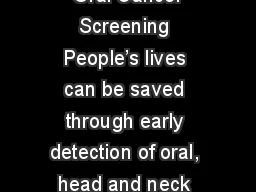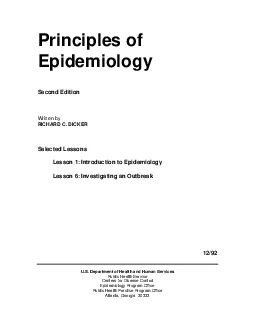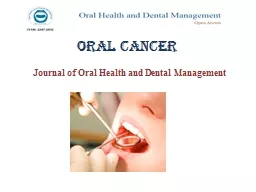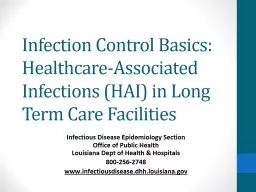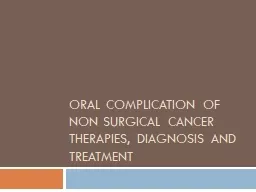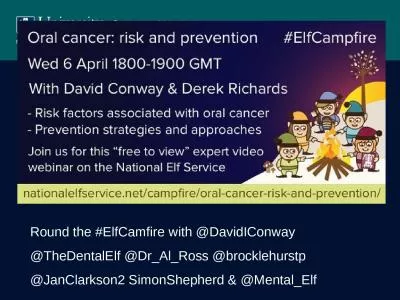PPT-EPIDEMIOLOGY, ETIOLOGY AND PREVENTION OF ORAL CANCER
Author : pamella-moone | Published Date : 2020-04-10
Sheethal M Sherif III rd YR BDS 1 CANCER A neoplasm is defined as an abnormal mass of tissue the growth of which exceeds and is uncoordinated with the normal tissues
Presentation Embed Code
Download Presentation
Download Presentation The PPT/PDF document " EPIDEMIOLOGY, ETIOLOGY AND PREVENTION O..." is the property of its rightful owner. Permission is granted to download and print the materials on this website for personal, non-commercial use only, and to display it on your personal computer provided you do not modify the materials and that you retain all copyright notices contained in the materials. By downloading content from our website, you accept the terms of this agreement.
EPIDEMIOLOGY, ETIOLOGY AND PREVENTION OF ORAL CANCER: Transcript
Download Rules Of Document
" EPIDEMIOLOGY, ETIOLOGY AND PREVENTION OF ORAL CANCER"The content belongs to its owner. You may download and print it for personal use, without modification, and keep all copyright notices. By downloading, you agree to these terms.
Related Documents

